Nowadays, it is becoming increasingly important to make sure we get the most value for money with all our purchases. It can be incredibly frustrating making a purchase and feeling our hard-earned cash has gone to waste.
Direct Air recently conducted a study to find out what is the best value popcorn on the market. Popcorn is swiftly becoming one of the UK’s most favored snacks due to its lower calorie contents and brands creating new and exciting flavors, many of us are choosing this as a ‘healthier’ alternative to the classic crisp.
A study in 2016 showed popcorn sales have increased by a staggering 169% in the last 5 years and this continues to rise.
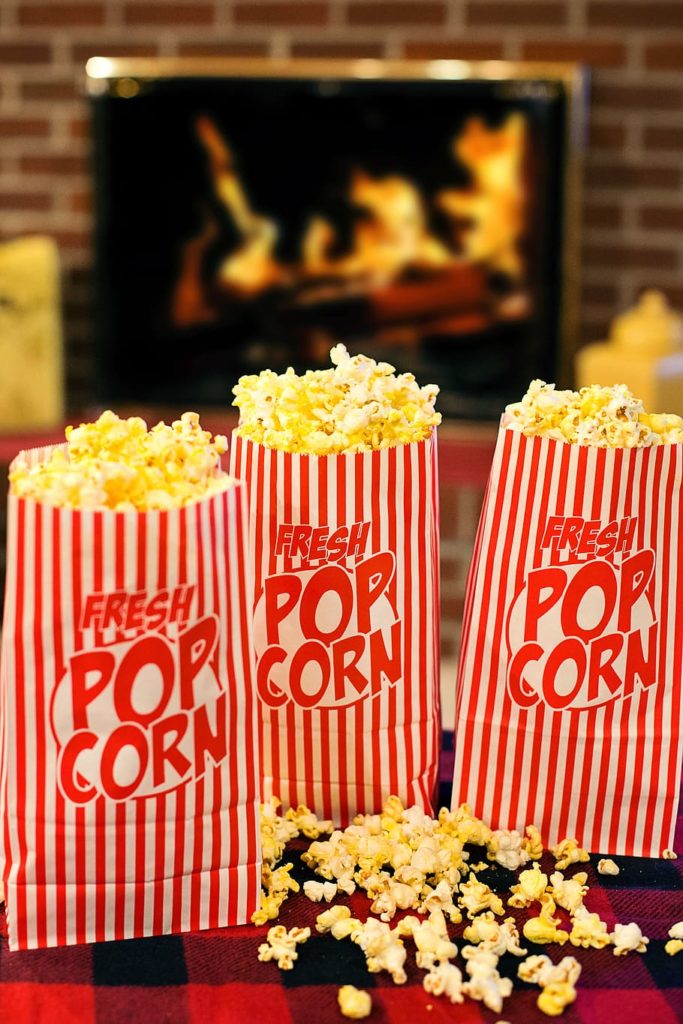
source:pxfuel.com
But how many of these brands are duping consumers with deceiving packaging and leaving us feeling out-of-pocket when we make a purchase?
Just like crisps, popcorn manufacturers use air, more specifically nitrogen, within their packaging. This air protects the product in transit and also helps to keep popcorn fresher for longer, ensuring we receive a quality product.
But it appears some brands are using far more air than others. Direct Air tested some of our most-loved brands and flavored to discover the ‘popcorn to air’ ratio that we are paying for. The results are as follows:
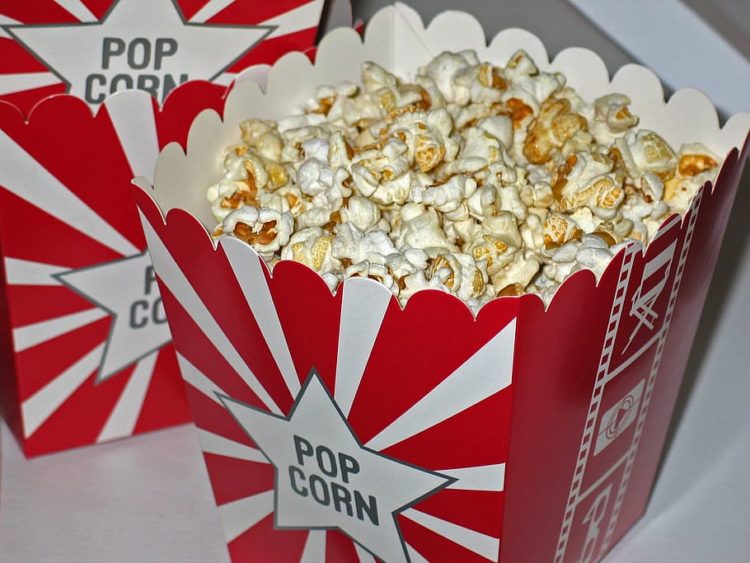
source:pxfuel.com
| Brand/Flavour | Price Per 100g (£) | Air Percentage in Bag |
| Proper Corn Peanut Butter & Almond | 1.60 | 71% |
| Nude Sweet & Salty | 1.56 | 62% |
| Nude Simply Salted | 1.92 | 62% |
| Tyrrell’s Sweet | 1.94 | 57% |
| Metcalfe’s Toffee Apple | 2.25 | 55% |
| Tyrrell’s Sea Salted | 2.50 | 55% |
| Tesco Salted | 1.24 | 55% |
| Marks & Spencer Salted | 1.54 | 55% |
| Metcalfe’s Sweet ‘N’ Salt | 1.25 | 54% |
| Proper Corn Perfectly Sweet | 1.78 | 54% |
| Waitrose Sea Salty | 1.43 | 53% |
| Waitrose Sweet & Salty | 1.11 | 53% |
| Tesco Sweet & Salty | 0.96 | 52% |
| Butterkist Cinema Sweet | 1.70 | 48% |
| Butterkist Toffee | 1.00 | 44% |
| Marks & Spencer Salted Caramel | 0.57 | 31% |
The study was conducted using a water displacement method in which packages were submerged in water before and after the removal of air to determine the rise in water level.
We can already see a huge difference between the top and bottom scoring brands of 71% air and 31%.
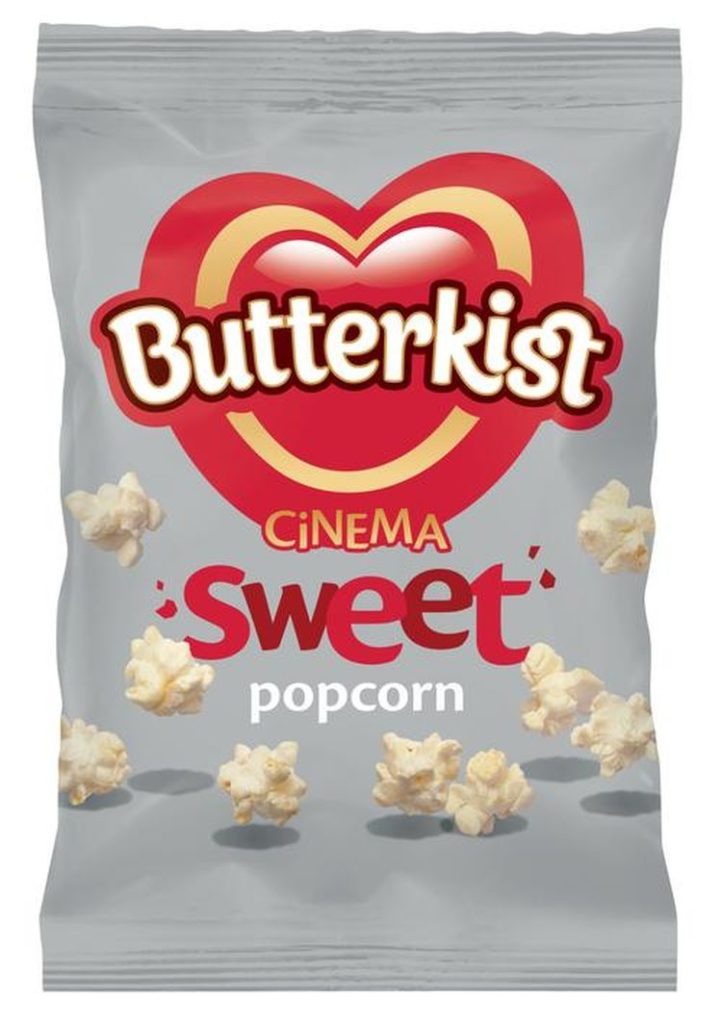
source:chocolatebuttons.co.uk
We will of course not dispute the need for air within our popcorn packaging. We would be even more devastated to open our bags to discover a stale, crushed product with the absence of nitrogen. But with such a huge difference between the 71% used in Proper Corn’s peanut butter & almond and the much smaller Marks & Spencer salted caramel’s 31%, why are some brands being able to achieve the same results with so much less air? In 2016, Marks & Spencer pledged to reduce the packaging in crisps and popcorn by 20% and it looks like they have kept to their word.
It appears some brands are needlessly filling their packaging with more air, perhaps to give the appearance of a fuller bag to entice consumers?
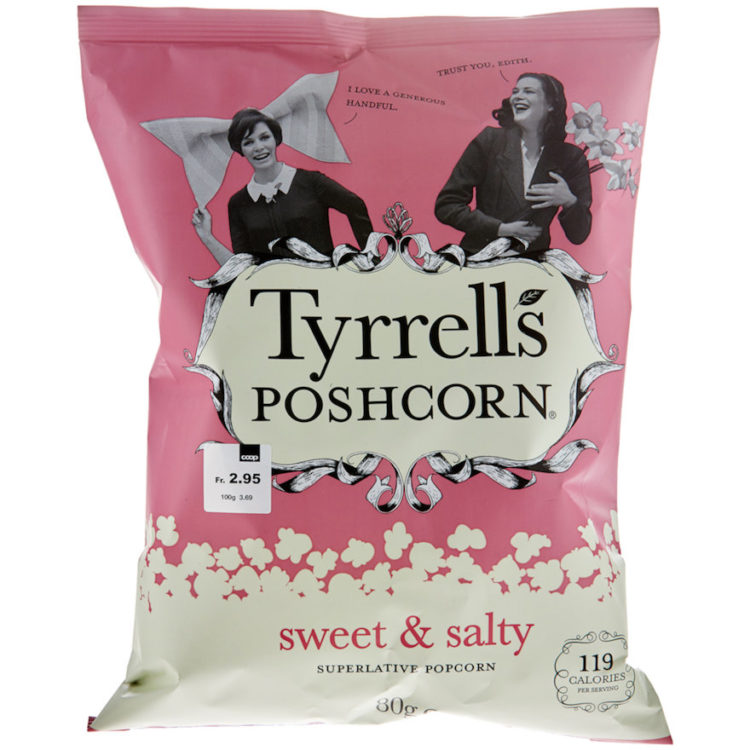
source:coopathome.ch
From this study, the average percentage of air within our popcorn is 54% and for every £1.58 spent on the snack, 86p of this isn’t even on popcorn and wasted into ‘thin air’. Hardly value for money.
Not only does this impact our spending but also the environment. It is estimated a standard popcorn bag will take at least 8 decades to degrade, so surely manufacturers should be trying to reduce their plastic waste as much as possible.
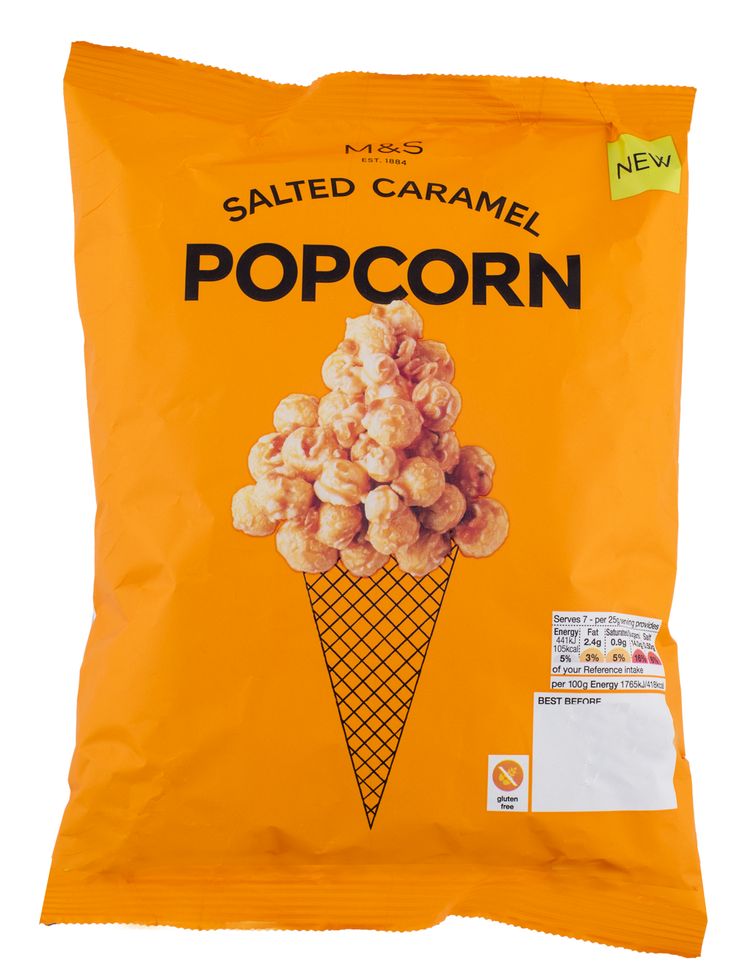
source:m-s.gr
Beach cleaners have discovered similar packaging from the 80s and 90s that have hardly started to wither, so this estimate could be on the low side. More air equals more packaging and as popcorn is purchased and consumed in such high numbers and speed, who knows how much plastic is filling our landfills due to manufacturers refusing to reduce their nitrogen use.
Other food companies are making a switch to more eco-friendly packaging after public scrutiny and awareness have led to a negative view of plastic waste. Crisp manufacturers have faced a public backlash and are beginning to make a change and Walkers have made a pledge to make all their packaging 100% recyclable or biodegradable by 2025. Considering they create over 7000 packets a minute, this couldn’t come sooner. However, popcorn brands seem to have escaped this and it is time to throw them under the spotlight and increase pressure for them to change.
Daniel Hinde states: ‘I think there are some really interesting things happening within closed-loop, renewable and refillable packaging. The packaging is also available now especially for things like snack bars which can be completely composted and decompose down like a fruit peel. Edible food packaging is also something I have heard we will be seeing an introduction of which is exciting. We also have a lot of natural material packaging being developed which again can be composted and breaks down in a suitable environment. Particularly within the food and drink these kinds of solutions have to be taken into consideration on a per-product basis, as what works well for one product might not necessarily work well for another.’- Daniel Hinde, Greatergood Design

source:pxfuel.com
While it may be a few more years before single us plastic is completely eradicated, this study has proven that it can easily be reduced. This will already have a positive impact on the environment.
So, next time you are at the supermarket, you may make a conscious decision between these brands to get the most value and also the most sustainable. If you want to really scrutinize these brands, the worst value, pound for pound, is Tyrell’s salted, for the £2.50 you would be spending, £1.38 is on air which is roughly double what you’d pay for the average bag.
Alternatively, you can save yourself the cash and also the planet from plastic but making popcorn yourself. Popcorn kernels are relatively cheap and easily ‘popped’ in microwaves using reusable containers. You can also add as much or little flavor as you like.





